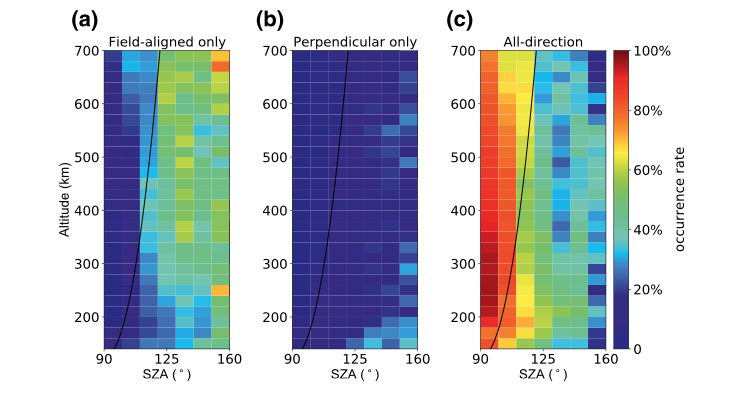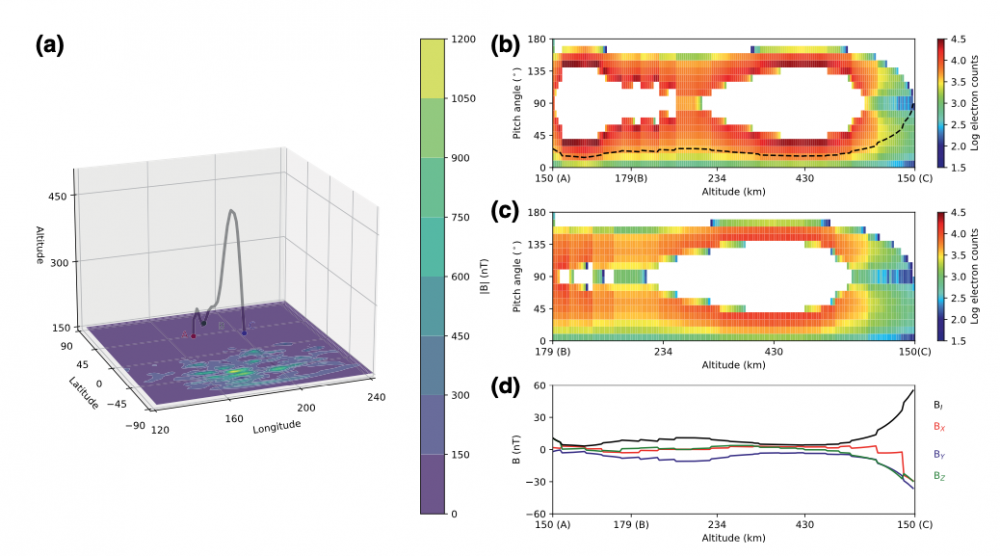A Survey of Photoelectrons on the Nightside of Mars
Photoelectrons are an important population of a planetary upper atmosphere that plays a crucial role in ionization, heating, radiation, and escape. Despite that photoelectrons are ideally produced by solar radiation on the dayside only, they have also been observed on the nightside of a planet such as Mars. This study is devoted to a statistical survey of photoelectrons in the nightside Martian upper atmosphere, based on the state-of-the-art measurements made by the Mars Atmosphere and Volatile Evolution (MAVEN) spacecraft. A surprisingly large fraction of photoelectron energy spectra is identified on the nightside of Mars, occupying nearly 30% of the available nightside measurements. Meanwhile, substantial variations in the observations of nightside photoelectrons are suggested by the data, revealing that (1) their occurrence rate declines rapidly near and beyond the terminator; (2) their velocities are more likely parallel to the ambient magnetic field lines; and (3) they are less likely observed under high solar wind dynamic pressures. These observations could be interpreted by photoelectron transport along large-scale magnetic field lines from their dayside source regions to the nightside, a scenario that is controlled by both internal and external conditions and thus provides a useful diagnostic of the ambient magnetic field configuration.



